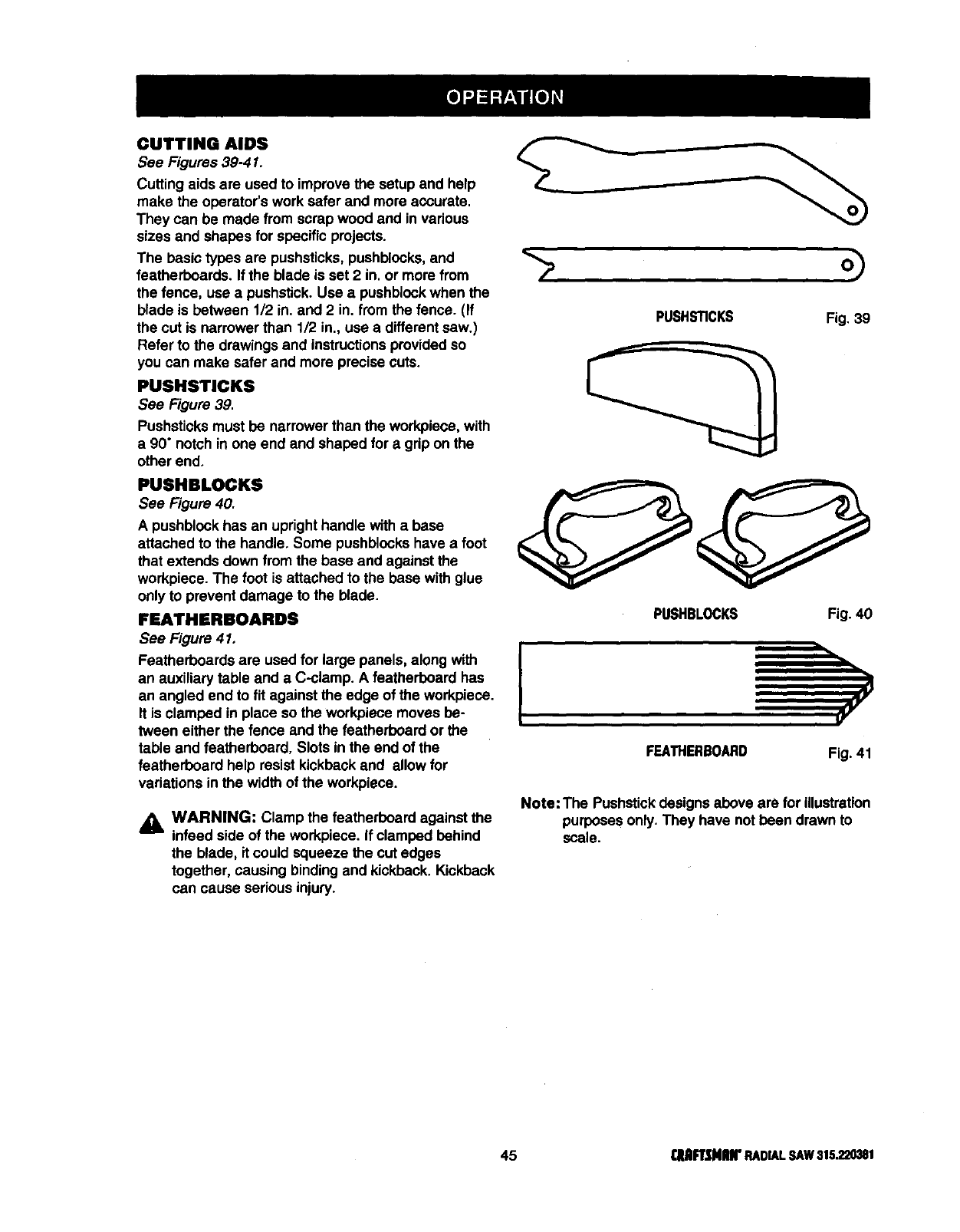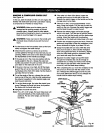
CUTTING AIDS
See Figures 39-41.
Cuttingaids are used to improvethe setup and help
make the operator's work safer and more accurate.
They can be made from scrapwood and in various
sizes and shapes for specificprojects.
The basictypos are pushsticks,pushblccks,and
featherboards. If the blade is set 2 in.or more from
the fence, usea pushstick. Use a pushblcckwhen the
blade is between 1/2 in.and 2 in.from the fence. (If
the cut is narrowerthan 1/2 in., use a differentsaw.)
Refer to the drawingsand instructionsprovidedso
you can make safer and more precisecuts.
PUSHSTICKS
See Figure 39.
Pushsticksmust be narrower than the workpiece, with
a 90" notch in one end and shaped for a grip on the
other end.
PUSHBLOCKS
See Figure 40.
A pushblockhas an uprighthandle with a base
attached to the handle. Some pushblockshave a foot
thatextends down fromthe base and against the
workpiece. The foot isattached to the base with glue
onlyto prevent damage to the blade.
FEATNERBOARDS
See Figure 41,
Featherboards are used for large panels, along with
an auxiliarytable and a C-clamp. A featherboardhas
an angled end to fit against the edge of the workpiece.
It is clamped in place so the workpiece moves be-
tween either the fence and the featherboard or the
table and featherboard, Slots in the end ofthe
featherboard help resist kickbackand allow for
variations inthe widthofthe workpiece.
_i WARNING: Clamp the featherboard against the
infeed side ofthe workpiece.If clamped behind
the blade, itcould squeeze the cut edges
together, causing bindingand kickback. Kickback
can cause serious injury.
--> o)
PUSHSTICKS Fig. 39
OO
PUSHBLOCKS Fig. 40
2
FEATHERBOARD Fig. 41
Note: The Pushstickdesigns above are for illustration
purposesonly. They have notbeen drawn to
scale.
45 r.lllFUNIIIrRADIALSAW315.220381


















